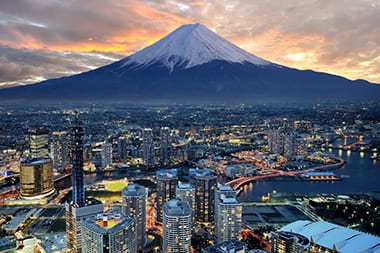
Takobou/wikimedia commons
Solar power generation made up some 10% of the peak summer electricity supplies of Japan’s nine major utilities, the Ashai newspaper reported on Thursday.
While solar power contributes only about 2% of annual power generation in the country, sunny skies throughout the summer increased power output, generating a total of some 15 GW of power in early August.
Japan has invested billions of dollars in renewable energy since 2012, when it introduced a feed-in tariff (FIT) program in an effort to reduce its reliance on nuclear power in the wake of the 2011 Fukushima catastrophe.
According to the Asahi report, the ratio of solar power at peak hours ranged from 5.9% at the Hokuriku Electric Power utility to as high as 24.6% at Kyushu Electric Power.
Installed solar capacity benefitting from the country’s FIT scheme reached more than 24 GW at the end of April, according to government data, up from about 5 GW before the program was launched.










